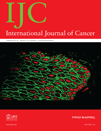Activity of deacetylase inhibitor panobinostat (LBH589) in cutaneous T-cell lymphoma models: Defining molecular mechanisms of resistance†
Potential conflicts of interest: All authors are currently or have been employees of Novartis Institutes for Biomedical Research, a division of Novartis AG and the developer of panobinostat.
Abstract
Panobinostat (LBH589) is a highly potent deacetylase inhibitor that has demonstrated clinical efficacy in patients with advanced cutaneous T-cell lymphoma (CTCL). To gain a better understanding of the compound activity in this tumor type, we investigated the cellular and molecular effects of panobinostat using both in vitro and in vivo models of CTCL. All 4 tested CTCL cell lines exhibited very high sensitivity to panobinostat-induced growth inhibition. However, only 2 of 4 lines exhibited significant response to the cytotoxic activity of panobinostat. In a CTCL xenograft mouse tumor model, panobinostat treatment resulted in complete tumor regression. The difference in cell sensitivity to panobinostat-induced death enabled us to further investigate potential mechanisms responsible for tumor sensitivity or resistance. In CTCL cell lines that were insensitive to panobinostat-induced apoptosis, constitutively activated NF-κB and high levels of Bcl-2 were observed. Inhibition of Bcl-2 sensitized cells to the cytotoxic activity of panobinostat. Conversely, knockdown of Bax diminished the CTCL cell sensitivity. Interestingly, panobinostat could induce cytotoxicity in vorinostat-resistant CTCL cells by downregulating phosphorylated STAT3 and STAT5 proteins. These studies suggest distinct mechanisms responsible for resistance to different deacetylase inhibitors. We show that the intrinsic apoptotic signaling plays an essential role in mediating panobinostat anticancer activity. Moreover, cancer cell sensitivity to panobinostat treatment may be further improved by combination with inhibition of anti-apoptotic factors. These data provide preclinical support that panobinostat, as a single agent or in combination with other anticancer agents, is a promising therapy for CTCL.




